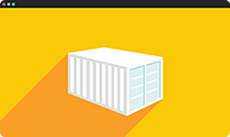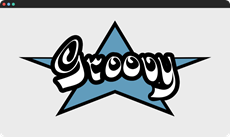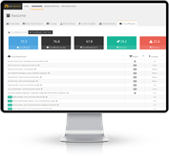A Fascination with Disruption
Ever since first learning about it in graduate school, I have been fascinated by the by the concept of Disruptive Technologies made famous by Clayton M. Christensen. The idea of small, startup companies creating new technologies that foster new business models and shake up the status quo sounded like the ultimate “David and Goliath” story of today. In the realm of cloud computing, I see a similar story unfolding. Large enterprises continue to adopt cloud computing for business applications. However, critical, legacy workloads (the brains of the business) have been much slower to migrate to cloud for various reasons. We are starting to see a shift in this lately with the popularity of cloud containers which many organizations are using to accelerate migration of legacy workloads to the cloud. Containers feel like a disruptive technology within the broader cloud technology ecosystem and CAST is now helping enterprises adopt these containers much faster.
The term “Disruptive Technology” was first coined in 1995 by Clayton M. Christensen and Joseph Bower in their article Disruptive Technologies: Catching the Wave. Christensen further describes the term in his 1997 book The Innovator’s Dilemma. One characteristic of disruptive technologies I have always found intriguing is the concept of “low end disruption”. In laypersons’ terms, this is when a new technology is in fact not as “good” as the current paradigm (for example, automobiles were much less reliable than horse-drawn carriages for decades before they became mass produced by Ford). However, the new technology is attractive to a specific market of early adopters and uses this initial market foothold to grow while becoming more mainstream. Ultimately, it can overtake the status quo completely. The same can be said about cloud container technology. If we look at the spectrum of options available for adopting cloud computing, with Infrastructure as a Service (IaaS) on one end and cloud native or Platform as a Service (PaaS) on the other, containers typically sit somewhere in the middle. (Though one may argue serverless is even farther along the spectrum than PaaS, some will say it is a subset of PaaS. But, that is a debate for another time.) Containers offer more scalability, management, and flexibility than IaaS. However, they are not able to leverage the full suite of cloud native services made possible by PaaS. They are essentially a middle ground in the cloud continuum, and I pose they are a form of disruptive technology – they are not as “good” as PaaS, but they are “good enough” for many organizations to start considering migration of critical workloads to the cloud. This is because containers are usually easier to adopt compared to the daunting task of having to refactor or rearchitect the workload to take advantage of PaaS.
CAST Highlight: A Disruptive Technology Enabler
The December 2020 release of CAST Highlight introduces innovative Container readiness reporting removing a major barrier to cloud container adoption for enterprise workloads. This new capability automatically identifies where and how applications need to be modified for containerization. CAST Highlight discovers specific source code patterns that prevent the adoption of containers (called Blockers) and makes precise recommendations on how to remove these Blockers in the source code. This enables organizations to adopt container technologies such as Docker, Kubernetes, and OpenShift in days versus weeks or months. CAST Highlight has the potential to be a disruptive technology itself if its current trajectory continues. However, today at CAST we celebrate the fact that we are enabling our clients to adopt another disruptive technology much faster.
Read on below for more info on the latest release of CAST Highlight.
|
What’s new in CAST Highlight? |
||||||||||||||||||||
|
















SHARE